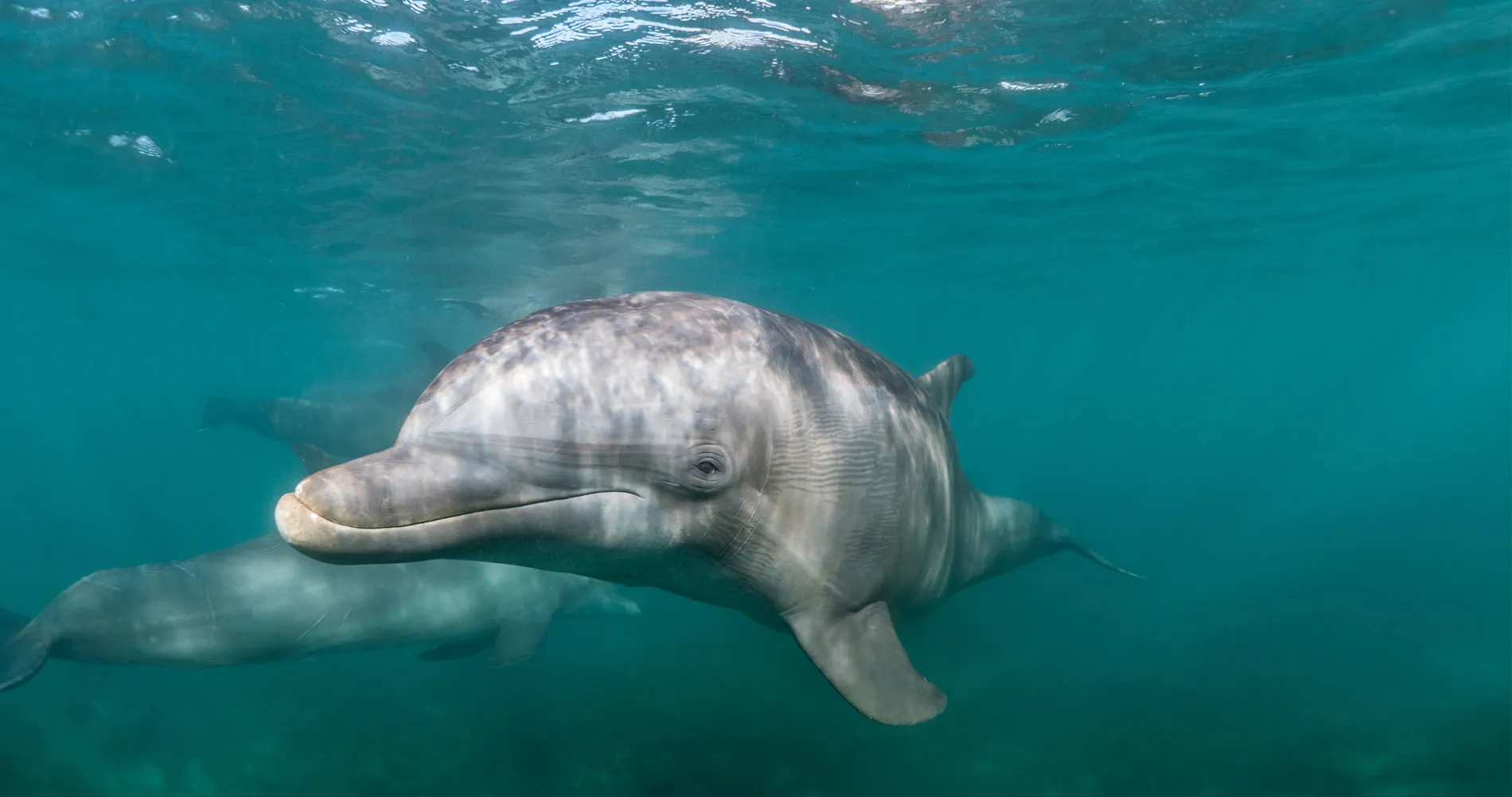The Gulf of America is facing a crisis due to fentanyl pollution, with traces of the opioid found in dolphins, signaling widespread contamination. This pollution stems from improper medication disposal, inefficient wastewater treatment, and drug trafficking. If dolphins, as apex predators, are being affected, smaller fish and other marine creatures may also be at risk of bioaccumulation. This raises significant concerns about the safety of seafood consumption and the impact on human health.
Daniella Vanova
2 April 2025
French version | German version
The Gulf of America (aka Gulf of Mexico) is a vital marine ecosystem teeming with diverse marine life. This Gulf is facing an unprecedented crisis—one linked to the devastating effects of fentanyl pollution. In recent years, scientists have detected traces of fentanyl in the blubber of dolphins inhabiting these waters, raising alarm bells about the far-reaching impact of human pharmaceutical waste on marine ecosystems. Once known for its thriving marine biodiversity, the Gulf has become the site of an environmental catastrophe, with dolphins serving as a stark indicator of the dangers posed by opioid contamination. Once again Fentanyl is killing and ruining lives.
One consequence of the fentanyl crisis facing the US and impacting US-Mexican-Canadian relations is the significant impact this drug has on dolphin populations. This in turn has implications for both other oceanic species and human health as a whole.
Fentanyl is a synthetic opioid that is up to 100 times more potent than morphine and is widely used in pain management. Unfortunately, its presence is not limited to hospitals and illicit drug markets—it has found its way into the oceans. A recent study conducted by Texas A&M University-Corpus Christi and the National Oceanic and Atmospheric Administration (NOAA) revealed alarming traces of fentanyl in bottlenose dolphins in the Gulf of America. Out of 89 dolphins tested, 24 were found to have detectable levels of fentanyl, indicating widespread contamination.
But how does fentanyl enter marine ecosystems? One of the primary culprits is wastewater discharge. Improper disposal of medications and inefficient wastewater treatment processes allow opioids to seep into rivers, eventually reaching the ocean. Additionally, illicit drug trafficking routes along the Gulf Coast have led to drug-related waste being dumped into waterways. A particularly concerning case involved a deceased dolphin found in Baffin Bay, Texas, near an area where a large liquid fentanyl drug bust had occurred months earlier, suggesting a direct link between human activities and marine pollution.
Dolphins, being apex predators in their habitat, are particularly vulnerable to bioaccumulation—the process by which toxins build up in an organism’s body over time. The physiological effects of fentanyl on dolphins are still being studied, but given its impact on the human nervous system, scientists believe the consequences could be severe. Some of the known health which arise fentanyl consumption, even in small doses, that are shared between humans and dolphins: respiratory depression and lethargy; altered behavior; immune system suppression; reproductive issues.
Studies have shown that the contamination of fentanyl on other species has led to reproductive issues as it can disrupt hormonal balance and reproductive cycles. If dolphins have the same reaction, we will be seeing a much larger decline in population over time even after the fentanyl crisis.
These physiological disruptions not only threaten individual dolphins but also destabilize the delicate marine food web. As key indicators of ocean health, the decline of dolphin populations serves as a warning sign for the broader ecosystem.
The presence of fentanyl in dolphins is just one facet of a larger environmental issue—pharmaceutical pollution. Opioids are not the only drugs found in marine life. Studies have also detected antidepressants, antibiotics, and other pharmaceuticals in various fish and shellfish species. This raises significant concerns about the safety of seafood consumption and the impact on human health. If dolphins, as apex predators, are being affected, smaller fish and other marine creatures may also be at risk of bioaccumulation.
Unfortunately, the pharmaceutical contamination is not limited to the Gulf of America. Studies have shown that traces of opioids in marine species have been found across different regions. The increasing fentanyl in marine environments highlights the urgency for stricter enforcement of pharmaceutical regulations within waste and water disposal in treatment facilities.
Not only is marine life hugely affected by the impact of fentanyl contamination, but humans as well. Those who consume seafood frequently from affected waters may also be at risk of exposure to the harmful pollutants. The studies related to the side effects within humans caused by the consumption of contaminated seafood is still under investigation.
Given that the Gulf of America is bordered by six Mexican states with a combined population of approximately 20 million people, water pollution could have a significant impact on the health of these communities if contaminants seep into the water supply. If traditional water treatment plants are unable to filter out synthetic opioids and other pollutants, the communities reliant on this water could face long-term exposure, leading to potentially harmful health consequences in the future. This alone should be incentive enough for the Mexican government to go everything in its power to combat drug cartels in Mexico.
Addressing the fentanyl crisis in marine environments requires a multifaceted approach involving government intervention, scientific research, and public awareness. The approach could include: improving wastewater treatment; stronger drug disposal regulations; increased monitoring and research; public advocacy; and perhaps the most important, a crackdown on illegal drug trafficking.
The tragic reality of dolphins dying due to fentanyl contamination in the Gulf of America serves as a stark reminder of the unintended consequences of human ignorance and pharmaceutical waste. As apex predators, dolphins reflect the overall health of marine ecosystems, and their suffering signals a broader environmental crisis that could have long-term repercussions for both marine and human populations. Urgent action is needed to curb pharmaceutical pollution, stop the illicit fentanyl trade, improve wastewater treatment, and raise public awareness about the dangers of opioids in aquatic environments.






















